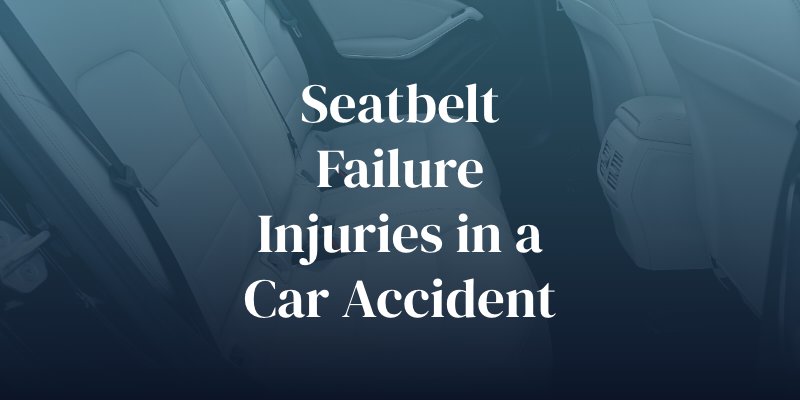When you get in a vehicle and buckle up, you expect that seatbelt to protect you in the event of an accident. Unfortunately, seatbelt failures can and do occur, leaving victims with more serious injuries than they may have experienced otherwise.
What many people don’t realize is that these failures often stem from defective design, manufacturing flaws, or improper installation that existed long before the accident. If you were injured due to a seatbelt failure in Kansas City, you have the right to seek justice. Learn more from a Kansas City injury lawyer today.
Common Ways That Seatbelts Fail in an Accident
Seatbelt failures, while rare, can lead to devastating consequences. Some failures are immediately obvious, while others may be less obvious without expert analysis. Common types of seatbelt failures may include:
- Buckle or Latch Failures: The locking mechanism releases during impact, allowing the occupant to become completely unrestrained.
- Spooling Problems: Excessive belt webbing releases during the collision, creating dangerous slack that allows the body to move too far forward.
- Retractor Failures: The belt fails to lock or tighten properly during impact, preventing it from securely restraining the occupant.
- Webbing Tears: The belt material itself rips apart during collision forces, eliminating all restraint.
- Mount Point Failures: The attachment points connecting the belt to the vehicle break loose during the crash.

Who Is Liable for Seatbelt Failure Injuries?
If a seatbelt fails during an accident, you may have legal options beyond a standard car accident claim. Seatbelt failures often fall under product liability law, which holds manufacturers responsible for defective products that cause harm. In these situations, you have the right to file a product liability lawsuit against the party responsible for the failure.
The seatbelt manufacturer bears primary responsibility if their product contains design flaws, manufacturing defects, or inadequate warning labels. Vehicle manufacturers may also share liability, as they integrate seatbelt systems into their vehicles and have a duty to ensure all safety components work properly together.
Car dealerships or repair shops can be liable if they improperly installed, maintained, or failed to recall defective seatbelt systems. In some cases, distributors or parts suppliers might share responsibility if they distributed defective components.
What Evidence Can You Use to Prove Seatbelt Failures?
To prove liability in a seatbelt failure lawsuit, you will need to show that the seatbelt was defective and that this defect directly contributed to your injuries. This requires strong and compelling evidence that your attorney can help collect in the aftermath of your accident.
The physical seatbelt itself is the most important piece of evidence and should be preserved immediately after the accident. Medical records can help demonstrate how the seatbelt failure contributed to your injuries. Your attorney will also connect you with qualified experts who can help build your case; for example, automotive engineers can analyze the failed restraint system and identify specific defects that may have led to your accident.
Contact Dollar, Burns, Becker, and Hershewe Today
When safety devices fail, catastrophic injuries follow. Manufacturers must be held accountable when their seatbelts malfunction during a crash. The Kansas City auto accident attorneys at Dollar, Burns, Becker, and Hershewe have the resources to investigate complex product liability cases and prove how seatbelt failures contributed to your injuries. Contact us at (816) 876-2600 for a free consultation with lawyers who are not afraid to stand up to powerful corporations.